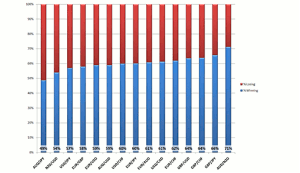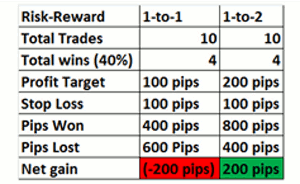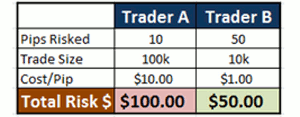When trading, it’s wise to follow one simple rule: always seek a bigger reward than the loss you are risking, and Jeremy Wagner of DailyFX Education offers tips on proper risk management.
The fact is that most traders, regardless of how intelligent and knowledgeable they may be about the markets, lose money. Are the markets really so enigmatic that few can profit or are there a series of common mistakes that befall many traders? The answer is the latter.
The good news is that the problem, while it can be emotionally and psychologically challenging, can be solved by using solid risk management techniques.
Today, we will discuss two key aspects of risk management.
Risk a little to make a lot—use at least a 1:2 risk to reward ratio.
Risk a small portion of your account—risk less than 5% of your account on all open trades.
Use at Least a 1:2 Risk to Reward Ratio
Last fall, DailyFX published its traits of successful traders. We went through extensive research on the behaviors why most traders lose. Most traders lose money simply because they do not understand or adhere to good money management practices.
Part of money management is essentially determining your risk before placing a trade. Without a sense of money management, many traders hold on to losing positions far too long, but take profits on winning positions prematurely. The result is a seemingly paradoxical scenario that in reality is all too common: the trader ends up having more winning trades than losing trades, but still loses money (see chart above).
To resolve this paradox, establish your risk and reward parameters ahead of time. Insist on taking trades that offer at least a 1:2 risk to reward ratio. This means that for every pip of risk you are taking in the trade, seek out at least 2 pips of potential reward. By doing so, you are relieving the pressure from yourself to have to be right in the trade.
As James Stanley eloquently points out in his trading plan, you can be right only 50% of the time when using a 1:2 risk to reward ratio to give yourself a shot at consistent returns.
Risk No More Than 5%
However, there is another element to consistent risk management. How much of your account are you risking?
Too often, I hear from clients via Twitter or during our live Webinars that they are risking a small amount, just 20 pips on the trade. However, the true risk on the trade is how much of your account balance are you exposing?
Is it possible that Trader A can have a stop loss set at 10 pips and risk more than Trader B with a 50 pip stop loss? Yes!
As you can see from the above example, the trade size (and resulting cost per pip) multiplied by your stop distance determines your risk on the trade.
In our courses, we suggest risking no more than 5% of your account balance on all open trades. That way, if you are wrong (and we established from the first key point that it is ok to be wrong 50% of the time), then you still have over 95% of your account balance available to trade tomorrow.
The formula to calculate risk on the trade is:
Cost Per Pip X Pips Risked = Account Balance Risked
For example, if I’m trading the AUD/JPY with a current pip cost of $1.25 per 10k position, then a trade with 50 pips of risk is $62.50 risked in my account.
[$1.25 X 50 pips = $62.50]
By Jeremy Wagner, Head Trading Instructor, DailyFX Education























